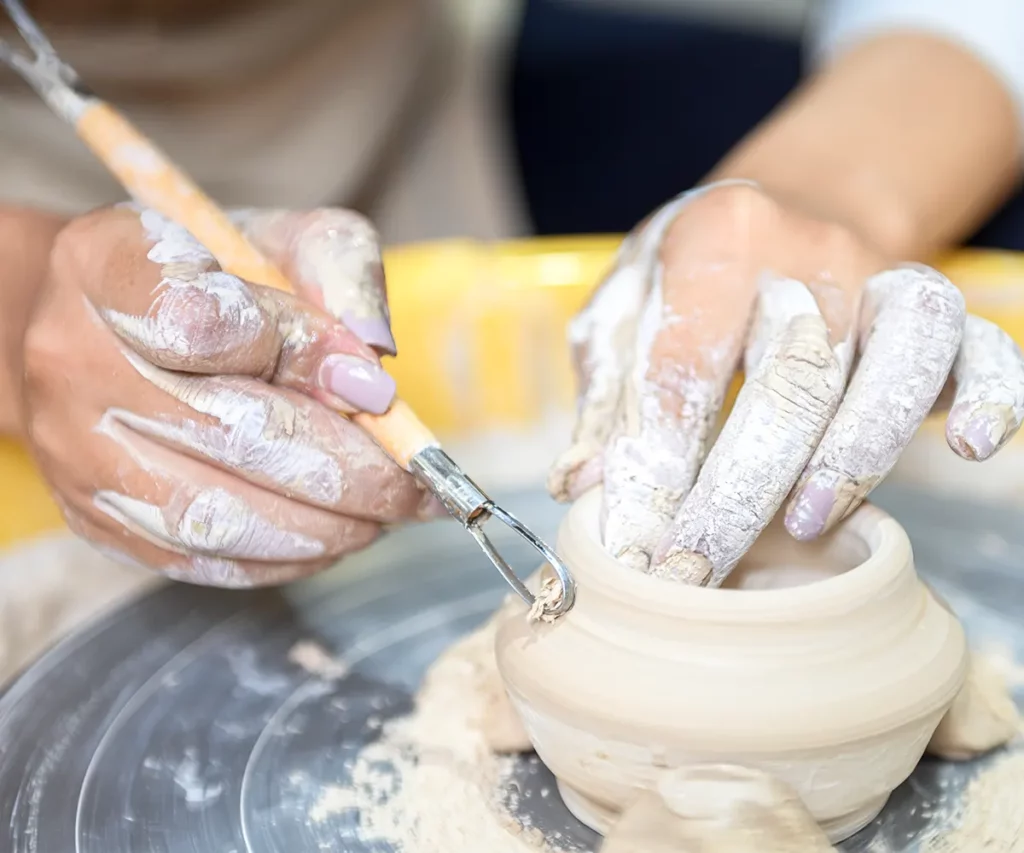
China plates are an essential part of our daily lives, gracing our tables with elegance and beauty. The intricate craftsmanship and attention to detail that goes into making these plates is truly awe-inspiring. In this article, we will take a closer look at the fascinating process of how china plates are made, from the history of their origins to the final firing and quality control.
History of China Plates
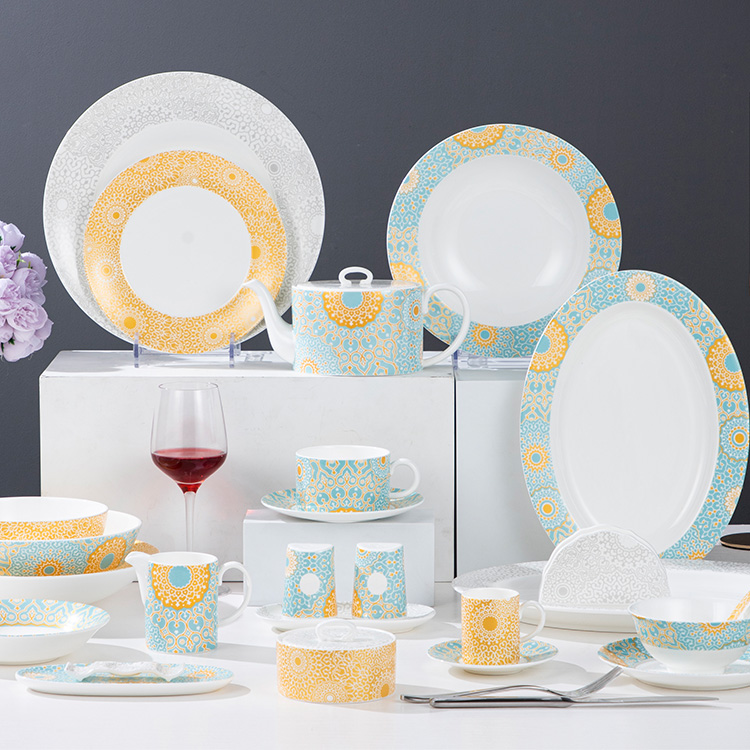
China plates have a rich and storied history that dates back several centuries. The origins of china plates can be traced back to ancient China, where they were initially created for the imperial court. These plates were highly prized for their delicate designs and exquisite craftsmanship.
China plates first gained popularity in Western cultures during the 16th century, when trade routes opened up between China and Europe. The plates quickly became a symbol of wealth and luxury, adorning the tables of nobility and the social elite.
What are China Plates Made of?

The production of china plates involves the use of various materials to create the perfect blend of strength, translucency, and beauty. The primary components of china plates are clay and kaolin, a fine white clay that is known for its purity and low iron content. These materials are carefully selected to ensure the plates’ durability and aesthetic appeal.
In addition to clay and kaolin, other materials are used in the production process, such as feldspar, quartz, and bone ash. Feldspar helps to lower the melting temperature of the clay, while quartz adds strength to the plate. Bone ash, derived from animal bones, is used to enhance the whiteness and translucency of the plates.
Step #1: Harvesting and Preparing the Clay
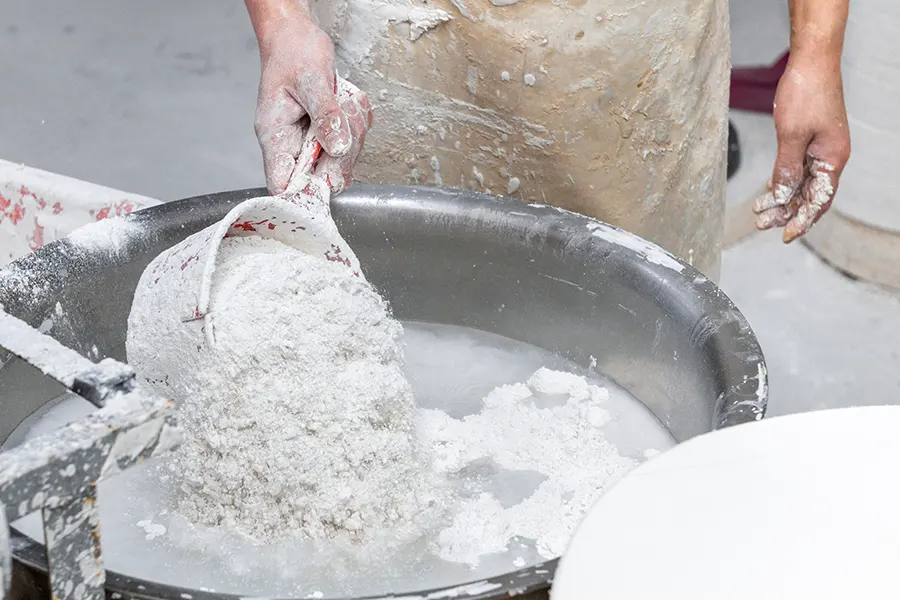
The process of making china plates begins with the harvesting of clay from specialized mines. The clay is extracted carefully to ensure its purity and quality. Once the clay has been harvested, it undergoes a series of preparation methods to remove impurities and improve its workability.
These preparation methods include washing, grinding, and sieving the clay to create a fine powder. This powder is then mixed with water to form a clay slurry, which will be used in the plate production process.
Step #2: Forming the Plate Body
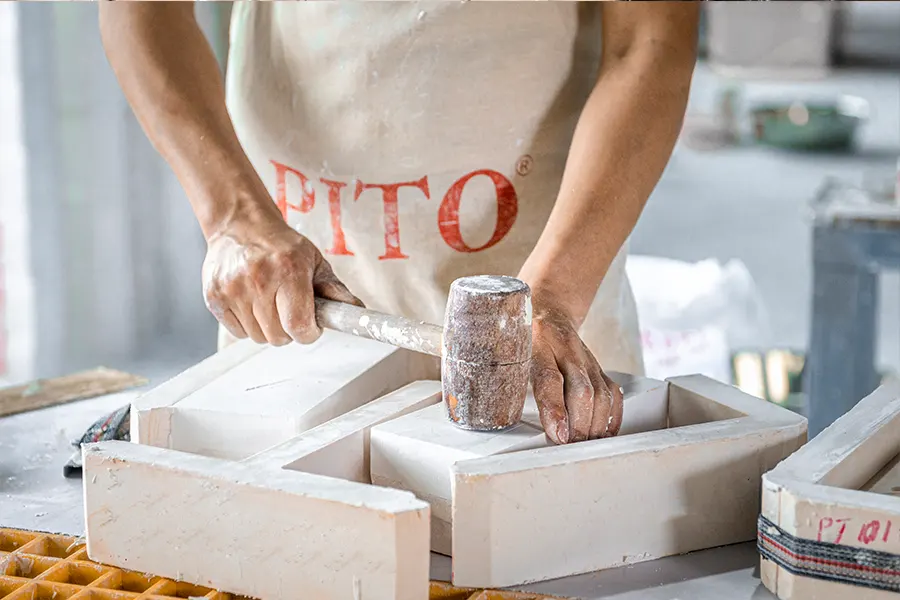
Once the clay slurry has been prepared, it is time to form the plate body. There are various methods used for this process, including slip casting, jiggering, and pressing.
- In slip casting, the clay slurry is poured into plaster molds, which absorb the water content, leaving a layer of clay behind. This layer of clay is then carefully removed from the mold and shaped into the desired plate form.
- Jiggering involves the use of a rotating mold, which shapes the plate body as it spins. This method allows for more precise shaping and consistent thickness throughout the plate.
- Pressing, on the other hand, involves pressing the clay slurry between two molds to create the plate shape. This method is often used for larger plates or plates with intricate designs.
Step #3: Shaping and Designing the Plate
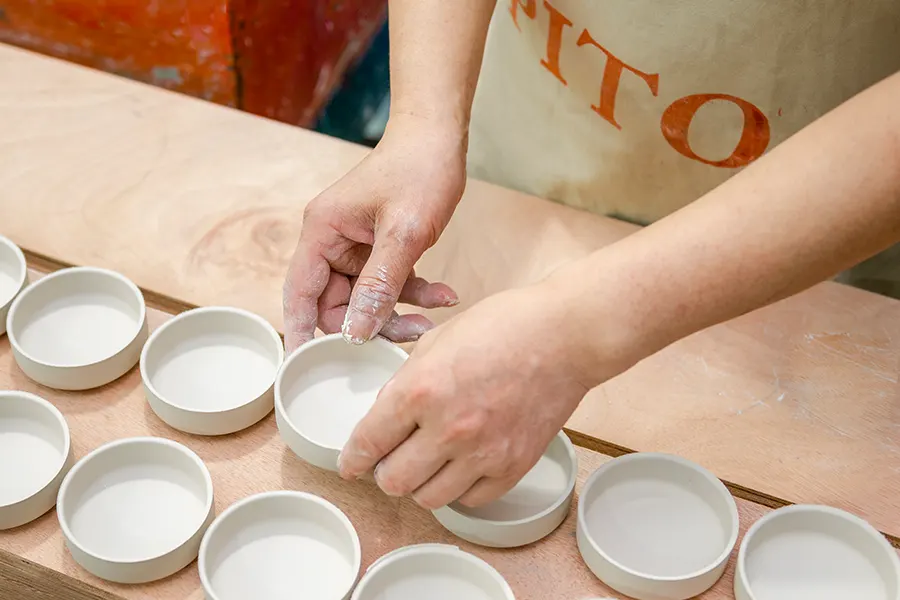
After the plate body has been formed, it is time to shape and mold it into its final design. Various techniques are used for this process, such as trimming, turning, and embossing.
- Trimming involves removing excess clay from the plate edges and creating a smooth and even rim.
- Turning refers to the process of shaping the foot ring, which provides stability for the plate.
- Embossing is a decorative technique that involves creating raised designs or patterns on the plate’s surface.
In terms of plate designs and patterns, there is a wide range of options available. From traditional floral motifs to modern abstract designs, china plates offer endless possibilities for creative expression.
Step #4: Drying the Plate
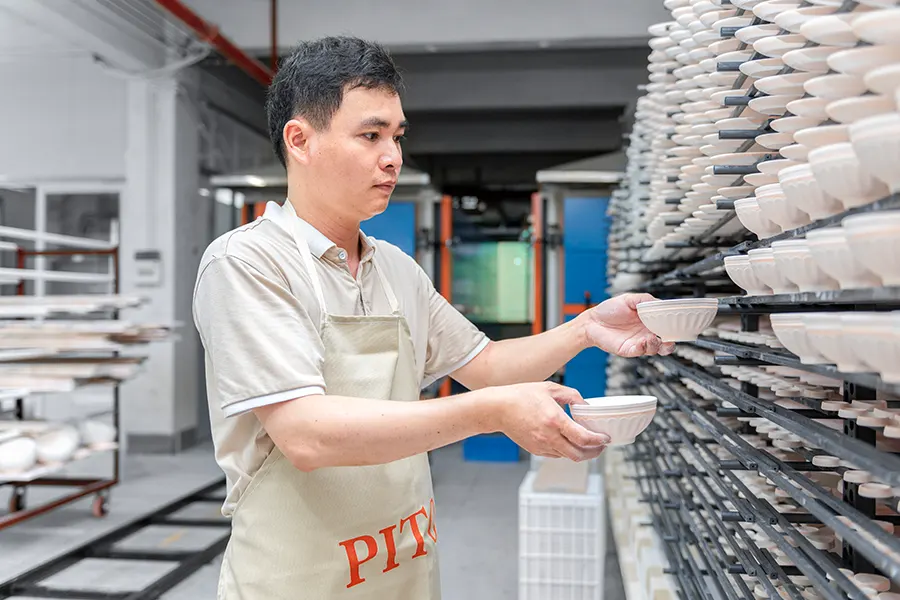
After the shaping and designing process, the plates need to undergo a careful drying process. Controlled drying is crucial to prevent warping or cracking of the plates.
The plates are placed in a carefully controlled drying room with controlled humidity and temperature levels. This slow and gradual drying process allows the clay to dry evenly, ensuring the plates maintain their shape and stability.
Step #5: Bisque Firing
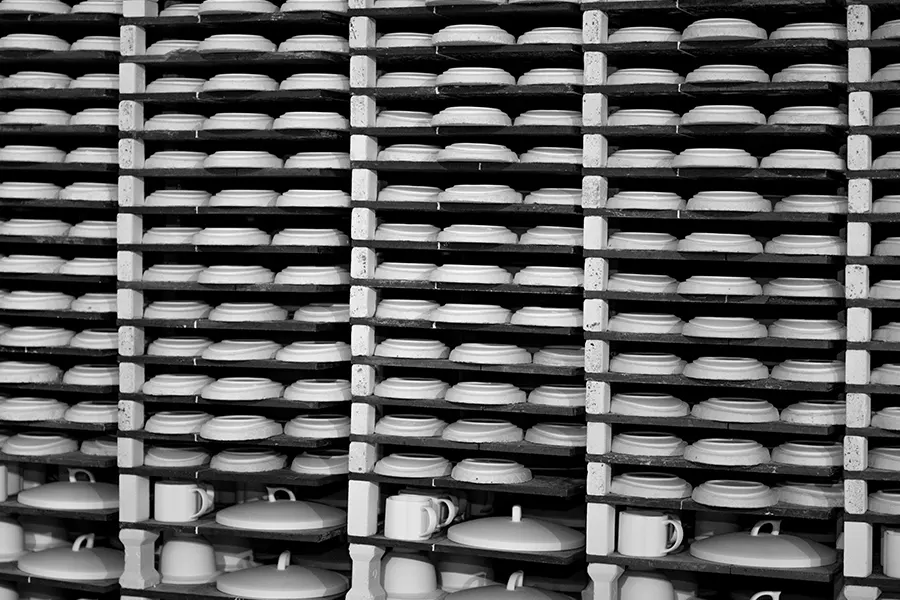
Once the plates have been dried, they are ready for the first firing, known as bisque firing. Bisque firing involves heating the plates at a high temperature, typically around 1832°F (1000°C), for a specific duration, usually several hours.
This firing process serves to harden the plates and prepare them for the glazing process. The high temperature also helps to eliminate any remaining moisture in the clay, ensuring the plates are strong and durable.
Step #6: Glazing the Plate
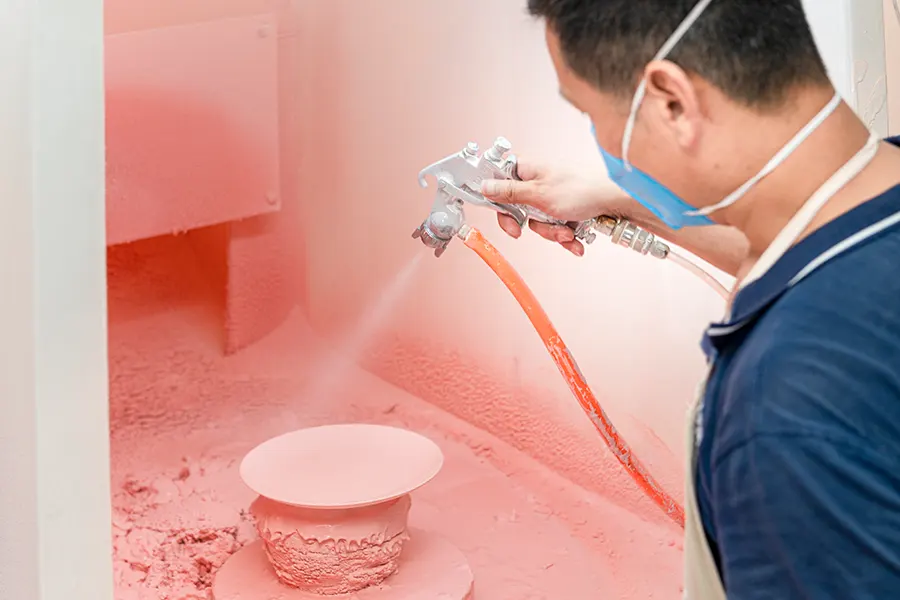
After the bisque firing, the plates are ready to be glazed. Glazing adds a beautiful finish to the plates and enhances their visual appeal. There are various types of glazes used for china plates, including transparent glazes, colored glazes, and textured glazes.
The glazing process involves applying the glaze onto the plates using different methods such as spraying, dipping, or brushing. The plates are then fired for a second time at a lower temperature, allowing the glaze to melt and fuse with the clay body.
Step #7: Decorating China Plates
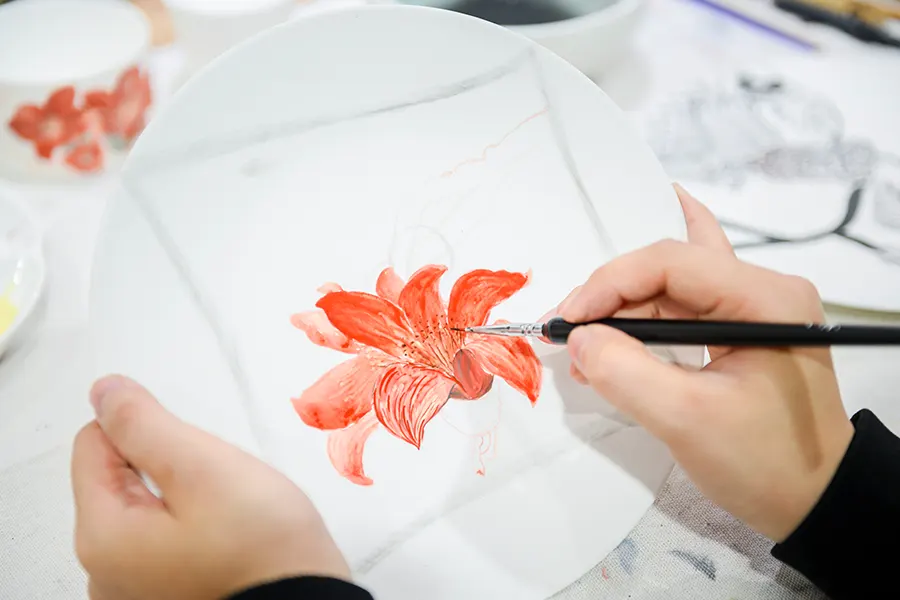
Once the plates have been glazed, they are ready for the decorative process. China plates can be decorated using a variety of techniques, both traditional and modern.
- Traditional decorative methods include hand-painting, underglaze transfer printing, and hand-engraving. These techniques require great skill and precision, as they involve intricate designs and patterns.
- Modern decorative methods include screen printing, decal application, and digital printing. These methods allow for more complex designs and the reproduction of fine details.
Step #8: Firing the Plates
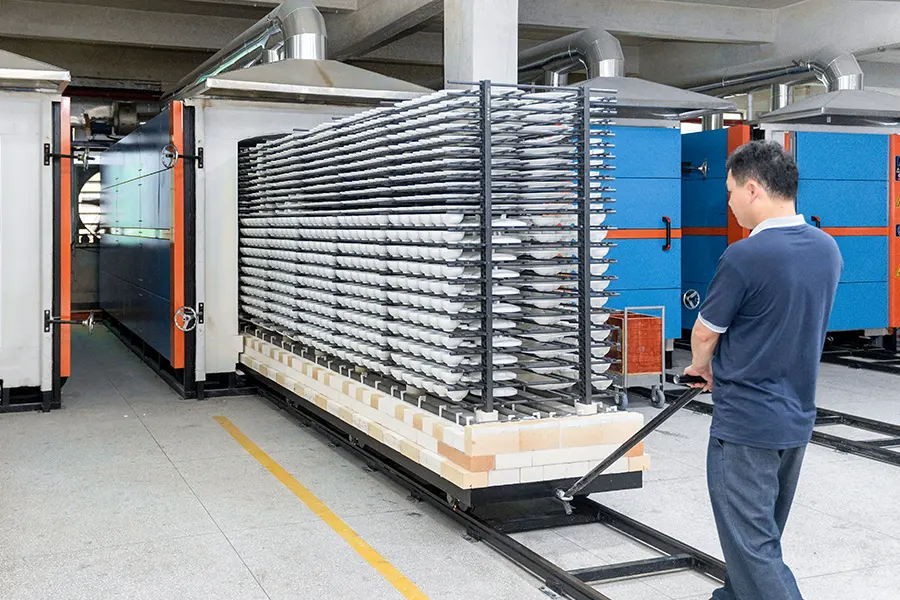
After the decorative process, the plates undergo a final firing at a high temperature, typically around 2372°F (1300°C). This firing ensures that the decoration becomes permanently fused with the glaze and clay body, creating a durable and long-lasting finish.
The high temperature firing also helps to enhance the colors and bring out the intricate details of the decoration. It is during this final firing that the true beauty of the china plates is revealed.
Step #9: Inspecting and Quality Control
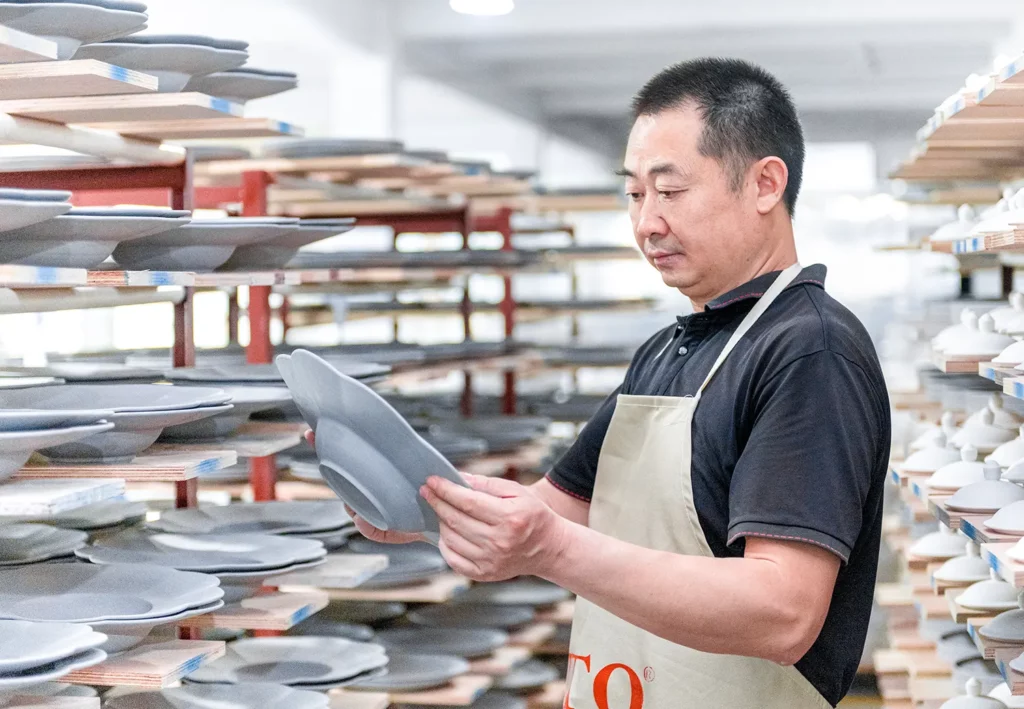
Quality control is of utmost importance in the production of china plates. Each plate undergoes a rigorous inspection process to ensure it meets the highest standards of craftsmanship and quality.
Inspectors carefully examine each plate for any defects or imperfections, such as cracks, uneven glaze, or inconsistencies in color. Any plates that do not meet the established criteria are discarded or sent back for further adjustments.
Step #10: Packaging and Shipping
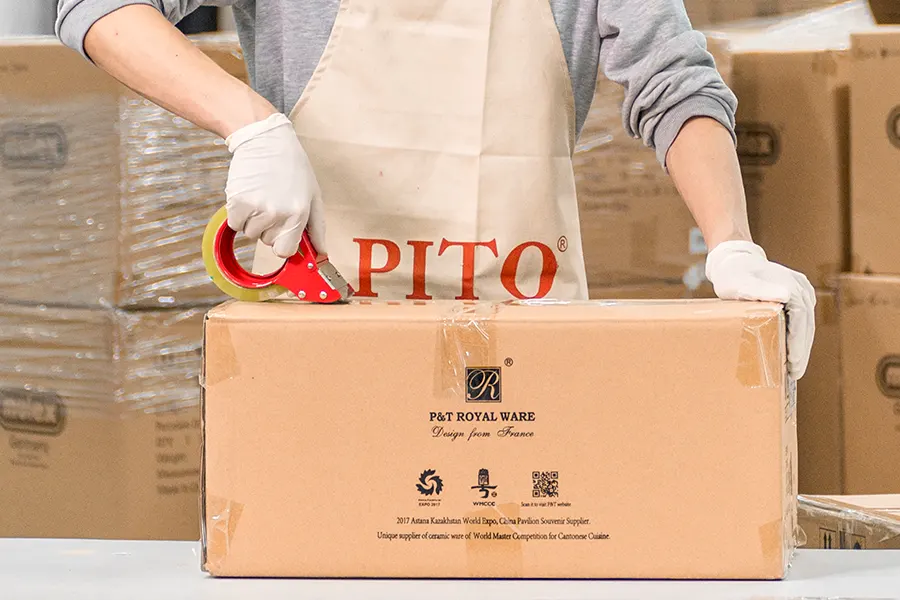
Once the plates have passed the inspection, they are ready to be packaged and shipped. The packaging process involves carefully wrapping each plate in protective materials, such as bubble wrap or foam, to prevent breakage during transit.
China plates are often packaged in sturdy cardboard boxes or wooden crates to provide additional protection. Special care is taken in labeling the packages and ensuring they are handled with care throughout the shipping process.
Maintenance and Care for China Plates
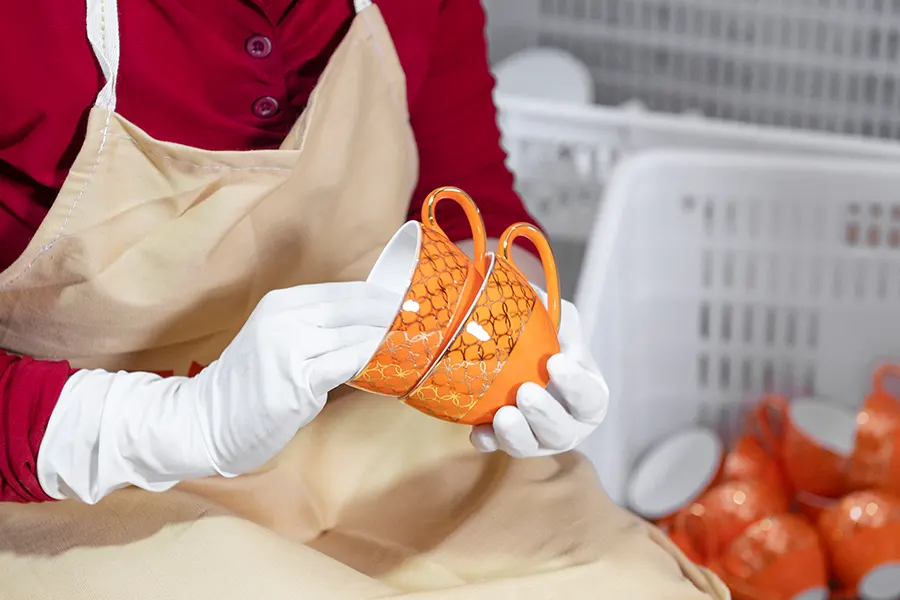
To ensure the longevity of china plates, proper maintenance and care are essential. Here are some tips and guidelines for maintaining your china plates:
- Avoid subjecting china plates to extreme temperature changes, as this can cause them to crack or shatter.
- Hand-wash china plates with warm water and mild dish soap, using a soft sponge or cloth. Avoid using harsh abrasive cleaners or scrub brushes.
- Dry china plates immediately after washing to prevent water spots or staining.
- Store china plates in a dry and dust-free environment, preferably in a display cabinet or china cabinet. Use protective padding or felt liners to prevent scratching.
- Avoid stacking china plates directly on top of each other, as this can lead to chipping or scratching. Use plate separators or soft cloth napkins between plates for added protection.
Conclusion
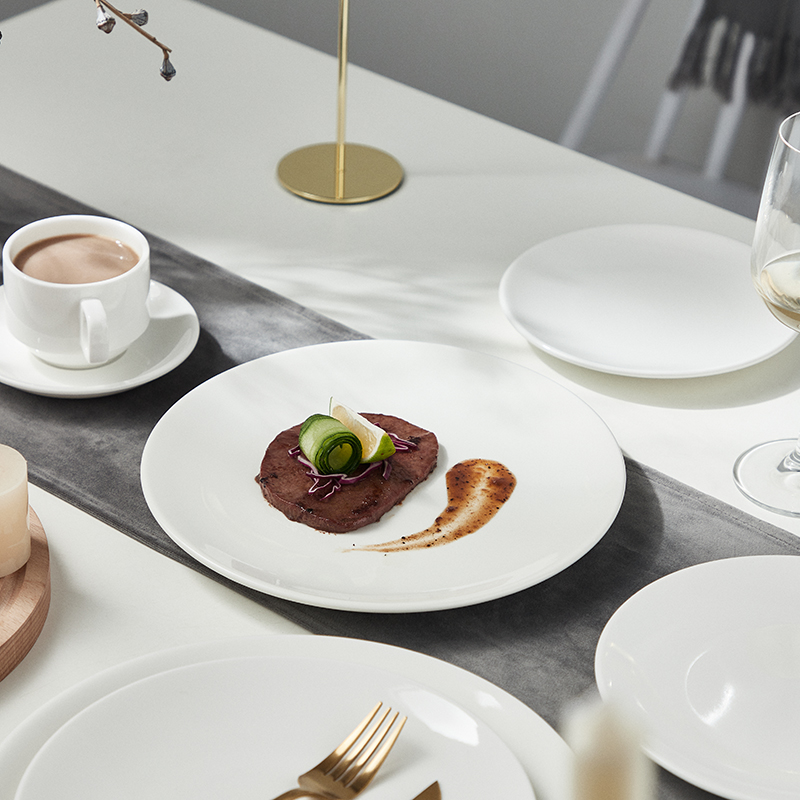
The production of china plates is a remarkable blend of artistry and craftsmanship. From the careful selection of materials to the intricate shaping and designing process, every step involved in making these plates requires skill and patience. The result is a masterpiece of elegance and beauty that graces our tables and adds a touch of sophistication to our dining experiences. So, the next time you dine on fine china, take a moment to appreciate the artistry and dedication that went into creating such a remarkable piece of tableware.
Frequently Asked Questions
1. What are china plates made of?
China plates are primarily made of clay and kaolin, with additional materials such as feldspar, quartz, and bone ash to enhance their strength and translucency.
2. What is so special about china plates
China plates are known for their elegance, durability, and intricate designs. The meticulous craftsmanship and attention to detail that goes into their production sets them apart from other types of plates.
3. Are china plates microwave safe?
While most china plates are microwave safe, it is always important to check the ceramic crockery manufacturer‘s guidelines. Some delicate or hand-painted china plates may not be suitable for use in the microwave.
4. Can china dishes go in the dishwasher?
Yes, china dishes can generally be placed in the dishwasher. However, it is important to check the manufacturer’s guidelines or the specific care instructions for your china dishes to ensure they are dishwasher safe. Some delicate or hand-painted china dishes may require hand-washing to preserve their appearance and longevity.


